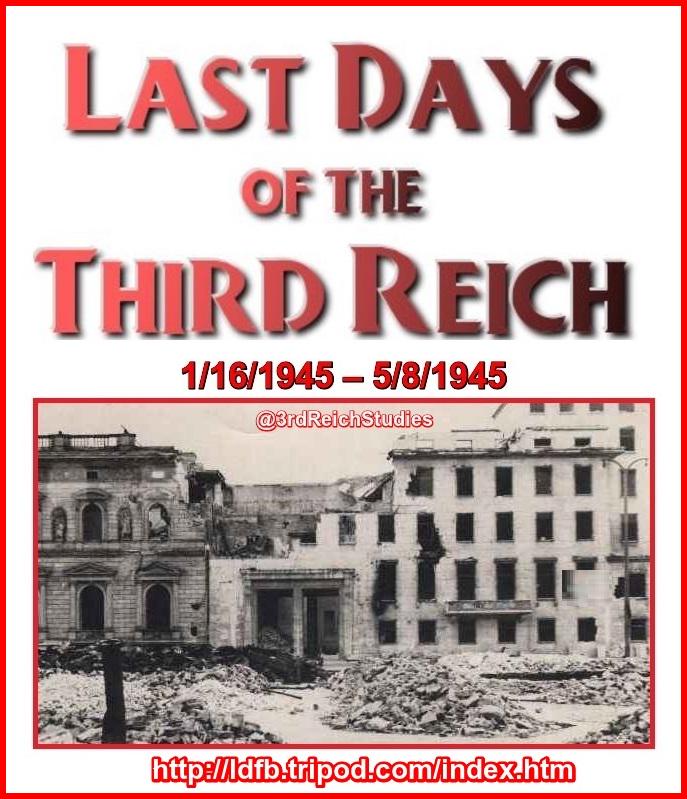(2 of 3)
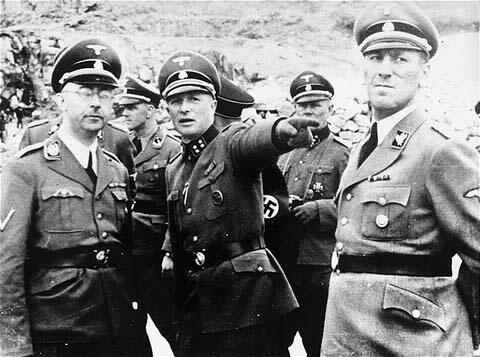
September 22, 1939: The RSHA, or Reichssicherheitshauptamt (Reich Security Head Office), is created by Heinrich Himmler through the merger of the Sicherheitsdienst (SD, or Security Agency), the Geheime Staatspolizei (Gestapo, Secret State Police), and the Kriminalpolizei (Criminal Police).
October 7, 1939: Hitler awards Himmler the new position of head of the RKFDV, an organization responsible for the deportation of Poles and Jews from Polish provinces.
December 21, 1939: Heydrich places Adolf Eichmann as "special agent" of the RSHA.
From the affidavit of Alois Hollriegl, former guard at Mauthausen concentration camp: I, Alois Hollriegl, being first duly sworn, declare: I was a member of the Totenkopf SS and stationed at the Mauthausen Concentration Camp from January 1940 until the end of the war. On one occasion, I believe it was in the fall of 1942, Ernst Kaltenbrunner visited Mauthausen. I was on guard duty at the time and saw him twice. He went down into the gas chamber with Ziereis, commandant of the camp, at a time when prisoners were being gassed. The sound accompanying the gassing operation was well known to me. I heard the gassing taking place while Kaltenbrunner was present. I saw Kaltenbrunner come up from the gas cellar after the gassing operation had been completed.
February 21, 1940: Oberfuerher Richard Gluecks informs Himmler that he has found a "suitable site" for a new "quarantine Camp" at Auschwitz.April 29, 1940: Rudolf Hoess takes control of Auschwitz.
From Kaltenbrunner's IMT testimony: ...correctional labor camps were camps in which men were put if they were Germans, if they had dodged the compulsory labor service in spite of repeated reminders, or foreign workers who had left their place of work without permission and had been arrested, or workers who were caught during roundups on trains, railway stations, and roads, and who had no permanent labor contract. Confinement to such correctional labor camps covered a period of 14 to 56 days. ....
A so-called breach of labor contract in the Reich or an evasion of the Compulsory Labor Service by a German citizen is an offense which actually could have been dealt with by the law courts just as well. The law had provisions to that effect but because of the enormous number of workers employed in the entire Reich-not only Germans, who amounted to 15 or 20 million, but also 8 million foreign workers-it would have been impossible to start hundreds of thousands of proceedings in courts, in hundreds of thousands of cases, for failure to work or breach of contract, or willful desertion from the place of work, et cetera. It goes without saying that furthermore the police departments had no kind of prison accommodations extensive enough to give short-term sentences in such cases. For these reasons such correctional labor camps were established at the headquarters of the State Police or Criminal Police offices.
The Government General must, under no condition whatsoever, be an isolated and uniform economic region; it must not produce independently, even in part, any manufactured goods necessary for its subsistence; the Government General should be used by us merely as a source of unskilled labor (in industries such as brick manufacturing, road construction, et cetera). One cannot change the nature of a Slav, as the Fuehrer has already emphasized. While as a rule our German workers are by nature assiduous and diligent, the Poles are lazy and it is necessary to use compulsion to make them work. However, there is no reason to expect that the Government General will become an independent economic region, as there are no mineral resources, and even should such be available the Poles are not capable of utilizing them.
The Fuehrer has explained that the Reich needs large estates to provide food for our large cities; these large estates, as well as other agricultural enterprises, are in need of labor, and cheap labor in particular, for the cultivation of the soil and for harvesting. As soon as the harvest time is over, the laborers can go back to Poland because should they be employed in agriculture the whole year round they themselves would use up an important part of the crops. The best solution would thus be to import from Poland temporary laborers for the duration of the sowing and for the harvesting. Our industrial districts are overpopulated, while at the same time there is a lack of manpower in agriculture. That is where we can make use of the Polish laborers. For this reason, it would be quite right to have a surplus of manpower in the Government General, so that every year the laborers needed by the Reich' could be procured from there.
It is indispensable to bear in mind that the Polish gentry must cease to exist; however cruel this may sound, wherever they are, they must be exterminated. There must, of course, be no sexual intercourse with Poles. It would consequently be a correct procedure if Polish harvesters, both men and women, came together to the Reich. Whatever the mutual relationships were in their camps would not be a matter of our concern-no zealous Protestant should poke his nose into these affairs. The Fuehrer stressed once more that there should be one master only for the Poles-the German; two masters, side by side, cannot and must not exist; therefore, all representatives of the Polish intelligentsia are to be exterminated. This sounds cruel, but such is the law of life. The Government General represents a Polish reserve of manpower-a vast Polish labor camp. The Poles will also benefit from this, as we look after their health and see to it that they do not starve, et cetera, but they must never be raised to a higher level, for they will then become anarchists and Communists. It will therefore be proper for the Poles to remain Roman Catholics; Polish priests will receive food from us and will, for that very reason, direct their little sheep along the path we favor.
The priests will be paid by us and will, in return, preach what we wish them to preach. If any priest acts differently, we shall make short work of him. The task of the priest is to keep the Poles quiet, stupid, and dull-witted. This is entirely in our interests. Should the Poles rise to a higher level of development, they will cease to be that manpower of which we are in need. In other respects it will suffice for a Pole to possess a small holding in the Government General-a large farm is not at all necessary; he will have to earn the money he requires in Germany. It is precisely this cheap labor we need; every German and every German worker will benefit by this cheap labor. A strict German administration must exist in the Government General to keep order in the labor reservations. These reservations mean for us the maintenance of agriculture, particularly of our large estates, and they are, besides, a source of supply of labor...To sum up, the Fuehrer wants to state once more:
1. The lowest German workman and the lowest German peasant must always stand economically 10 percent above any Pole...3. I do not wish (the Fuehrer stressed) that a German workman should, as a rule work more than 8 hours when we return to normal conditions; if a Pole, however, works 14 hours, he is still, in spite of that, to earn less than a German workman.
4. The ideal picture is this: A Pole must possess a small holding in the Government General which will, to a certain extent, provide him and his family with food. The money required by him for clothes, supplementary foods, et cetera, et cetera, he must earn by working in Germany. The Government General must become a center for supplying seasonal unskilled labor, particularly agricultural laborers. The existence of these workmen will be fully guaranteed, because they will always be used as cheap labor.
January 2, 1941: From a memo signed by Heydrich:
March 13, 1941: From a directive by the headquarters of the German High Command:
March 27, 1941: Directive 025, for the High Command (Oberbefehlshaber):
April 1941: Kaltenbrunner is promoted to Lieutenant General of Police with the Reich Governors in Vienna, Lower Danube and Upper Danube in Corps Area 17.
June 17, 1941: From Appendix 2 to Operational Order Number 8 of the Chief of the Security Police and SD:
From the IMT testimony of Otto Ohlendorf: Himmler told me that before the beginning of the Russian campaign Hitler had spoken of this mission to a conference of the army groups and the army chiefs--no, not the army chiefs but the commanding generals--and had instructed the commanding generals to provide the necessary support. They had no orders for liquidation; the order for the liquidation was given to Himmler to carry out, but since this liquidation took place in the operational area of the army group or the armies, they had to be ordered to provide support. Moreover, without such instructions to the army, the activities of the Einsatzgruppen would not have been possible...in the late summer of 1941 Himmler was in Nikolaiev. He assembled the leaders and men of the Einsatzkommandos, repeated to them the liquidation order, and pointed out that the leaders and men who were taking part in the liquidation bore no personal responsibility for the execution of this order. The responsibility was his, alone, and the Fuehrer's.
June 22, 1941 Unternehmen Barbarossa: Operation Barbarossa begins as 4.5 million troops of the Axis powers invade the USSR along an 1,800 mile front.July 5 , 1941: The Nuremberg law is extended to include Czech citizens.
July 7, 1941: An Einsatzkommando unit begins systematic killings of Lithuanian Jews.
From the IMT testimony of Otto Ohlendorf: The concept "Einsatzgruppe" was established after an agreement between the Chiefs of the RSHA, OKW, and OKH, on the separate use of Sipo units in the operational areas. The concept "Einsatzgruppe" first appeared during the Polish campaign. The agreement with the OKH and OKW, however, was arrived at only before the beginning of the Russian campaign. This agreement specified that a representative of the Chief of the Sipo and the SD would be assigned to the army groups, or armies, and that this official would have at his disposal mobile units of the Sipo and the SD in the form of an Einsatzgruppe, subdivided into Einsatzkommandos. The Einsatzkommandos would, on orders from the army group or army, be assigned to the individual army units as needed...the Einsatzgruppen and Einsatzkommandos, as I have just described them, were used on the basis of a written agreement between the OKW, OKH, and RSHA... the agreement stated that Einsatzgruppen and Einsatzkommandos would be set up and used in the operational areas. This created a precedent, because until that time the Army had, on its own responsibility, discharged the tasks which would now fall solely to the Sipo.
The second was the regulation as to competence...this was the relationship between the Army and the Einsatzgruppen and the Einsatzkommandos. The agreement specified that the army groups or armies would be responsible for the movement and the supply of Einsatzgruppen, but that instructions for their activities would come from the Chief of the Sipo and SD. Every army group was to have an Einsatzgruppe attached to it. The army group in its turn would then attach the Einsatzkommandos to the armies of the army group. The operational area of the Einsatzgruppe was already determined by the fact that it was attached to a specific army group and therefore moved with it, whereas the operational areas of the Einsatzkommandos were then fixed by the army group or army.
Even though the Chiefs of the Sipo and SD had the right to issue instructions to them on their work, there existed a general agreement that the army was also entitled to issue orders to the Einsatzgruppen, if the operational situation made it necessary. There were four Einsatzgruppen, Group A, B. C, and D. Chief of Einsatzgruppe A was Stahlecker; Chief of Einsatzgruppe B was Nebe; Chief of Einsatzgruppe C, Dr. Rasche, and later, Dr. Thomas; Chief of Einsatzgruppe D, I myself, and later Bierkamp...the Einsatzgruppen and the commanders of the Einsatzkommandos were orally instructed before their mission. The instructions were that in the Russian operational areas of the Einsatzgruppen the Jews, as well as the Soviet political commissars, were to be liquidated...I mean "killed." .... After his assumption of office Kaltenbrunner had to deal with these questions and consequently must have known details of the Einsatzgruppen which were offices of his.
From Kaltenbrunner's IMT testimony: I had no idea of the existence of these Einsatzkommandos as described by Ohlendorf. Later on I heard that they existed, but this was many months later. With regard to this point I want to say the following: It is known to the Tribunal from Ohlendorf's testimony and from Hitler's and Himmler's decrees which have been discussed here that orders for the killing of people had been given. These Einsatzkommandos have never been reorganized during the time when I was in office. These Einsatzkommandos which had been active up to that time were also dissolved or had been put under different commands before I took over the office. I do not know whether the witness Ohlendorf has stated here just when he returned from his Einsatzkommando...The Einsatzkommandos must later on have come under the charge of the Higher SS and Police Leaders in the occupied territories or, what is even more probable, under the charge of the chief of the anti-partisan units.
July 24, 1941: An Einsatzgruppe report states that 4,435 Jews were liquidated in the town of Lachowicze.From the IMT testimony of Otto Ohlendorf: I was present at two mass executions for purposes of inspection. A local Einsatzkommando attempted to collect all the Jews in its area by registering them. This registration was performed by the Jews themselves. On the pretext that they were to be resettled. After the registration the Jews were collected at one place; and from there they were later transported to the place of execution, which was, as a rule an antitank ditch or a natural excavation. The executions were carried out in a military manner, by firing squads under command. They were transported to the place of execution in trucks, always only as many as could be executed immediately. In this way it was attempted to keep the span of time from the moment in which the victims knew what was about to happen to them until the time of their actual execution as short as possible. The bodies were buried in the antitank ditch or excavation. The unit leaders or the firing-squad commanders had orders to see to this and, if need be, finish them off themselves. All valuables were confiscated at the time of the registration or the rounding up and handed over to the Finance Ministry, either through the RSHA or directly.
At first the clothing was given to the population, but in the winter of 1941-42 it was collected and disposed of by the NSV. They were obliged to take off their outer garments immediately before the execution. That was the order in my Einsatzgruppe. I don't know how it was done in other Einsatzgruppen. Some of the unit leaders did not carry out the liquidation in the military manner, but killed the victims singly by shooting them in the back of the neck. I was against that procedure...Because both for the victims and for those who carried out the executions, it was, psychologically, an immense burden to bear...the aim was that the individual leaders and men should be able to carry out the executions in a military manner acting on orders and should not have to make a decision of their own; it was, to all intents and purposes, an order which they were to carry out. On the other hand, it was known to me that through the emotional excitement of the executions ill-treatment could not be avoided, since the victims discovered too soon that they were to be executed and could not therefore endure prolonged nervous strain. And it seemed intolerable to me that individual leaders and men should in consequence be forced to kill a large number of people on their own decision. ....
All valuables were sent to Berlin, to the RSHA or to the Reich Ministry of Finance. The articles which could be used in the operational area, were disposed of there. (Things were done in this manner) Until the spring of 1942... Then an order came from Himmler that in the future women and children were to be killed only in gas vans. The Kommandos filled the graves to efface the signs of the execution, and then labor units of the population leveled them.
From Kaltenbrunner's IMT testimony: I am stating here emphatically that the special assignments which had been given to Heydrich, such as, for instance, the assignment with regard to the final solution of the Jewish problem, were not only not known to me at the time but were not taken over by me. Nominally I was the Chief of the Reich Security Main Office. As such, I considered the Intelligence Service and the reorganization of this Intelligence Service my proper sphere, as I have said before. The directives were given by Himmler, but in State Police and Criminal Police matters things were often done, as I found out very much later, in the name of the Chief of the Reich Security Main Office, that is, in my name, without my knowing of or seeing these orders when they were issued.
The chiefs of the Gestapo office and the Criminal Police office sometimes carried out these orders from Himmler, as I said, in such a way that they also signed my name as Chief of the Reich Security Main Office and, as I probably might have to state in detail later, they so continued routine habits which prevailed during Heydrich's time, who united all executive powers in his' hand and who could delegate the respective powers to Muller and Nebe. But I never had those powers from the beginning, and therefore I could never delegate any partial powers. Perhaps I ought to supplement the declaration of my responsibility in this respect by saying that possibly I have not taken the necessary care to make it clear that no order of the State Police or the Criminal Police should bear my name. That I did not concern myself with that sufficiently is Himmler's fault but probably also my fault.
October 7, 1941: From an order of the German Commander-in-Chief, signed by Jodl:
October 29, 1941: From Appendix 1 to Operational Order Number 14 of the Chief of the Security Police and SD:
From the IMT testimony of Otto Ohlendorf: Whenever possible I sent a member of the staff of the Einsatzgruppe to witness the executions, but this was not always feasible since the Einsatzgruppen had to operate over great distances...To determine whether or not my instructions regarding the manner of the execution were actually being carried out. He was to ascertain whether the conditions which I had set for the execution were actually being carried out.
1. Exclusion of the public;
2. Military execution by a firing-squad;
3. Arrival of the transports and carrying out of the liquidation in a smooth manner to avoid unnecessary excitement;
4. Supervision of the property to prevent looting. There may have been other details which I no longer remember. At any rate, all ill-treatment, whether physical or mental, was to be prevented through these measures. ....
That was a special order from Himmler to the effect that women and children were not to be exposed to the mental strain of the executions; and thus the men of the Kommandos, mostly married men, should not be compelled to aim at women and children.
2. It is essential to utilize the Russian primarily for the following types of work: Mining, road construction, war production (tanks, guns, aircraft equipment), agriculture, building, in large workshops (shoemaking) and in special detachments for urgent unforeseen jobs.
3. In taking measures to keep order, the decisive considerations are speed and severity. Only the following types of punishment, without any intermediate punitive sanctions, will be imposed: deprivation of food or death by sentence of court-martial.
April 6, 1942: On this Easter Monday, 200-300 Jews are killed in gas vans at Stalino and their corpses pushed into the shaft of a coal mine.
From the IMT testimony of Otto Ohlendorf: These gas vans were in future to be used for the killing of women and children. The actual purpose of these vans could not be seen from the outside. They looked like closed trucks, and were so constructed that at the start of the motor, gas was conducted into the van causing death in 10 to 15 minutes. The vans were loaded with the victims and driven to the place of burial, which was usually the same as that used for the mass executions. The time needed for transportation was sufficient to insure the death of the victims. They were told that they were to be transported to another locality...the victims were not conscious of what was happening to them. I received the report that the Einsatzkommandos did not willingly use the vans. Because the burial of the victims was a great ordeal for the members of the Einsatzkommandos. The gas vans did not belong to the motor pool of the Einsatzgruppen but were assigned to the Einsatzgruppe as a special unit, headed by the man who had constructed the vans. The vans were assigned to the Einsatzgruppen by the RSHA. I know only in the case of Einsatzgruppe D, and indirectly that Einsatzgruppe C also made use of these vans.
May 16, 1942: From an internal report concerning the use of gas vans:However, these machines became so well known that not only the officials but even the population called them the "death vans" as soon as they saw them. In my opinion it is impossible to camouflage and keep them secret for any length of time. I also gave orders that during asphyxiation by gas the operating personnel should keep away from the machine so that their health would not be impaired by escaping gas. In this connection I would like to call attention to the following: In certain units men are ordered to unload the machines after gassing. I have drawn the attention of the commanders of the corresponding Sonderkommandos to the immense physical and moral injury this kind of work could cause the men, if not immediately, then later. The men complained of headaches after every unloading. Nevertheless they do not want to change the procedure, for they are afraid that prisoners entrusted with the work may use this favorable moment to escape.
To protect the men from this injury, I would ask that appropriate orders be issued. The procedure of poisoning by gas is not always carried out in a correct manner. So as to end the business as quickly as possible, the drivers always open the throttle wide. As a consequence of this measure the condemned die of asphyxiation rather than falling asleep as had been originally intended. As a result of my orders death follows more rapidly, if the lever is set correctly, and in addition, the condemned people drop off peacefully to sleep. Distorted faces and defections, two symptoms which formerly had been noticed, were no longer observed. Today I will proceed to Group B. whence I shall send a further report. Dr. Becker, Untersturmfuehrer.
From the IMT testimony of Otto Ohlendorf: According to my recollection, Becker was the constructor of the vans. It was he who was in charge of the vans of Einsatzgruppe D. Rauff was group leader in Amt II of the RSHA. Among other things, he was at that time in charge of transportation. The contents roughly correspond to my experiences and are therefore probably correct. The external appearance of the (above) letter as well as the initial "R" (Rauff) on it, and the reference to Zwabel or Fabe: who took care of transportation under Rauff, seems to testify to the letter's authenticity. The contents roughly correspond to the experiences which I had at that time.
June 11, 1942: From the German newspaper Der Neue Tag:From the Affidavit of Dr. Rudolf Mildner: From my own knowledge I can confirm the following: I know the Defendant Kaltenbrunner personally. In his private life he was beyond reproach. In my opinion his promotion from Higher SS and Police Leader to Chief of the Security Police and the SD was due to the fact that Himmler, in June 1942, after the death of Heydrich, his chief rival, would suffer no man beside or under him who might have endangered his position. The Defendant Kaltenbrunner was, no doubt, the least dangerous man for Himmler. Kaltenbrunner had no ambition to gain influence by special deeds and eventually to push Himmler aside. There was no question of lust for power in his case. It is wrong to call him the little Himmler.
December 1942: Kaltenbrunner meets with Himmler at Berchtesgaden.From Kaltenbrunner's IMT testimony: In December 1942 he ordered me to come to Berchtesgaden, where he resided at the time, because the Fuehrer's headquarters were in the neighborhood, on the Obersalzberg. He told me first of Hitler's reproaches and demanded that I create a central intelligence service in the Reich. We had a lengthy discussion on this subject with reference to my reporting activity of the previous years. He was then of the opinion that the best solution would be if I were to take over the Reich Security Main Of lice as a transition basis for the creation of such an intelligence service. I refused to do that, giving detailed reasons, namely, that I had maintained a watching and critical attitude in Austria toward the over all development in the Reich, especially the inner political development. I explained to Himmler in detail why the Germans in Austria were disappointed and where I saw dangers that the same Austrians, who 4 years ago had turned with enthusiasm to the Reich, would become tired of the Reich. ....
I was given the order; I am referring to the first order. But I should like to state right now--and this is drawn like a red thread through my entire career to the last days of the war--that even then I explained to Himmler on which essential points I differed with National Socialism as to the home policy of the Reich, the foreign policy, the ideology, and the violations of law by the Government themselves. I declared to him, specifically, that the administration in the Reich was too centralized; that Austria was violently criticizing that centralized system, particularly since a federative status had been granted to other countries, such as Bavaria. I told him that the creation of a new German criminal law, the way it was attempted, was wrong, and that German criminal law was casuistic. The Austrian criminal law, based on a tradition of more than one hundred years, had proved to be the best and had also been recognized abroad. I explained to him that the concepts of protective custody and of concentration camps were not approved of in Austria, but that every man in Austria wanted to be tried before a court of law. I explained to him that anti-Semitism in Austria had developed an a Completely different way and also required a different handling.
No one in Austria, I said, had ever thought of going beyond the limits of anti-Semitism as laid down in the Party program. I also said that there was hardly any understanding in Austria for the fact that the Nuremberg Laws went beyond the Party program in this respect. In Austria, since 1934, there had been a peaceful, regulated policy to allow the Jews to emigrate. Any personal or physical persecution of Jews was completely unnecessary. I am referring to a document, which is somewhere in the court record. It is a report from the Chief of Police in Vienna, dated, I believe, December 1939, which proves in accordance with statistics that between 1934 and 1939, I think, of a total of 200,000 Jews more than half had emigrated to foreign countries. Those were the problems which I discussed at that time...And I told Himmler at that time that he knew very well that I had not only no training in police matters at all, but that an my activity up to then had been in the field of political intelligence work, and that therefore, when taking over the Reich Security Main Office I did not only refuse to have anything to do with such executive of flees as the Gestapo and the criminal police, but that my task to which he was appointing me, namely to set up and cultivate an intelligence service, would in fact be impeded by that.
I also said that I was not only extremely different from Heydrich personally but that also material differences existed insofar as Heydrich was an expert in police matters, whereas I was not, and that the policy with which he, Himmler, and Heydrich had already discredited the Reich could not be carried on by me. My name, my honor, and my family were too sacred to me for that. He reassured me in this respect by saying: "You know that in June 1942 Heydrich was assassinated and that I, myself, since his death"-and this was about 6 or 7 months after Heydrich's death-"have been handling his entire office myself. This is to continue insofar that I (Himmler) will retain the Executive offices for myself in the future. For this purpose I have at my disposal my well-trained experts, Muller and Nebe. You will not have to concern yourself with it. You take over the Intelligence Service, that is Amt III and Amt VI, as the transition basis for your Intelligence Service."
I told him at that time that an intelligence service could not be built up on the SD alone. An intelligence service whim until that time had been so narrow-minded because of Heydrich, and which had been forced more and more into executive work, is a priors unfit to search for intelligence material. Secondly, I told him an intelligence service ought to be smaller and, in particular, I considered it madness to have political and military intelligence separated from each other. No country in the whole world except Germany and France has adopted a two division setup for an intelligence service. I therefore demanded from him that he first procure a Fuehrer order on the strength of which the intelligence system of the Armed Forces, which rested in the OKW counterintelligence of lice (Amt Abwehr), should be united with the SD and should be furnished a new body of personnel, which ought to be selected and carefully screened...
From the affidavit of Walter Schellenberg, who was chief of Amt VI of the RSHA from the autumn of 1941 to the end of the war: On or about 25 January 1943, I went together with Kaltenbrunner to Himmler's headquarters at Lotzen in East Prussia. All of the Amt chiefs of the RSHA were present at this meeting, and Himmler informed us that Kaltenbrunner was to be appointed Chief of the Security Police and SD (RSHA) as successor to Heydrich. His appointment was effective 30 January 1943. I know of no limitation placed on Kaltenbrunner's authority as Chief of the Security Police and SD (RSHA). He promptly entered upon the duties of the office and assumed direct charge of the office and control over the Amt. All important matters of all Amter had to clear through Kaltenbrunner.
From the IMT testimony of Otto Ohlendorf: Kaltenbrunner was Chief of the Sicherheitspolizei and the SD; as such, he was also Chief of the RSHA, the internal organizational term for the office of the chief of the Sicherheitspolizei and the SD. Kaltenbrunner occupied this position from 30 January 1943 until the end of the war. Muller was Chief of Amt IV, the Gestapo. When the Gestapo was established, he became Deputy Chief, and as such he logically became Chief of Amt IV of the RSHA. He occupied this position until the end of the war. Eichmann occupied a position in Amt IV under Muller and worked on the Jewish problem from approximately 1940 onwards. To my knowledge, he also occupied this position until the end of the war...I was part-time Chief of Amt III from 1939 to 1945.
From Kaltenbrunner's IMT testimony: After this conference with Hitler in December 1942, he discharged me because I did not want to take over the Reich Security Main Office under those conditions which he had offered to me, namely, that the executive departments should be managed by himself as previously. He was so angry with me that he did not give me his hand and made me aware of his indignation in various other ways during the subsequent weeks. Toward the middle of January, the 16th or 18th, I was ordered by telegram to report to headquarters, which in the meantime had been transferred to East Prussia. I assumed that I was to get a post at the front because I had asked him for such a post. I went to headquarters with complete front equipment because I thought I had finally to expect the same fate that had been the fate of my brothers and of my other male relatives.
But I was wrong. He told me: "I have talked to the Fuehrer and the Fuehrer believes that the centralization and reorganization of the Intelligence Service is the right thing to do. He will initiate the necessary negotiations with the Armed Forces, and you will have to organize and build up this Intelligence Service. It still holds that I, with Muller and Nebe, will have direct charge of the executive offices." If you ask me now whether this limitation must have become apparent at once outside of the office, I have to answer that it was not publicized. Therefore, formally the Prosecution are right in charging me: "As far as the outside world is concerned, you never drew a demarcation line." To that I can say only that I believed I could rely on the words of my then superior. He had stated it to me in the presence of Nebe and Muller and had given them the personal order to communicate with him directly and to report to him and receive the orders from him directly, just as it had been done for the months since Heydrich's death.
March 16, 1943: An SS officer is killed by a Jew named Kotnowski in Lvov. In reprisal, the Germans hang 11 Jewish policeman from the balconies overlooking the main street of the Ghetto as another 1,000 Jews are taken away and shot.
From Kaltenbrunner's IMT testimony: If an execution order had Muller's signature, Muller can have signed it only on the strength of an order from Himmler, or on the strength of a sentence submitted by a court...Himmler never gave me such power; also the setup of the chain of command--the State Police remained under Himmler after Heydrich's death even after I took office--would have contradicted that.
From the Affidavit of Dr. Rudolf Mildner: I know of no specific limitation of the Defendant Kaltenbrunner's power with regard to the offices which were under the RSHA. On the other hand, I can say that Muller, the Chief of Amt IV, acted independently by virtue of his long experience and did not give to anyone, not even the chiefs of the other offices of the RSHA, any insight into his tasks and methods of his Amt IV. He had, after all, immediate protection from Himmler.
May 15, 1943: Translated British decrypt of a German SS Security Service (SD) communiqué from Ernst Kaltenbrunner, Head of the Reich Security Main Office, (Berlin) to Herbert Kappler, German Police Attaché in Rome.May 15, 1943: From another article which appeared in Die Deutsche Polizei:
As early as January 1934 Dr. Kaltenbrunner was jailed by the Dollfuss Government on account of his Nazi views and sent with other leading National Socialists into the concentration camp Kaisersteinbruch. He caused and led a hunger strike and forced the government to dismiss 490 National Socialist prisoners. In the following year he was jailed again, because of suspicion of high treason, and committed to the court martial of Wels (Upper Danube). After an investigation of many months, the accusation of high treason collapsed; but he was sentenced to 6 months' imprisonment for subversive activities. After the spring of 1935, Dr. Kaltenbrunner was the leader of the Austrian SS, the right to practice his profession having been suspended because of his National Socialist views. It redounds to his credit that in this important position he succeeded through energetic leadership in maintaining the unity of the Austrian SS, which he had built up in spite of all persecution, and succeeded in committing it successfully at the right moment.
After the Anschluss, in which the SS was a decisive factor, he was appointed State Secretary for Security Matters on 11 March 1938 in the new National Socialist Cabinet of Dr. Seyss-Inquart. A few hours later he was able to report to the Reichsfuehrer SS Heinrich Himmler, who had landed at Aspern, the Vienna airport, on 12 March 1938, 3 AM, as the first National Socialist leader, that the movement had achieved complete victory...The Fuehrer promoted Dr. Kaltenbrunner on the day of the annexation to SS Brigadefuehrer and leader of the SS-Oberabschnitt Donau. On 11 September 1938 this was followed by his promotion to SS Gruppenfuehrer...During the liquidation of the Austrian National Government and the reorganization of Austria into the Alps and Danube Districts, he was appointed Higher SS and Police Leader with the Reich Governors in Vienna, Lower Danube and Upper Danube in Corps Area 17, and in April 1941 he was promoted to Lieutenant General of Police.
May 15, 1943: Eberhard von Thadden, a Foreign Office official who was head of the Jewish desk, notes in his diary a visit by representatives of the Italian Fascist Party to Generalkommissar Wilhelm Kube in Minsk. Kube showed the visitors a church that was being used as a warehouse. From Thadden's diary:
July 26, 1943: Kaltenbrunner orders the establishment of correctional labor camps:
From Kaltenbrunner's IMT testimony: I conclude from the fact that my name is typewritten that this order (establishing the camps) had not been shown to me before it went out: otherwise I would have signed it in handwriting...correctional labor camps were camps in which men were put if they were Germans, if they had dodged the compulsory labor service in spite of repeated reminders, or foreign workers who had left their place of work without permission and had been arrested, or workers who were caught during roundups on trains, railway stations, and roads, and who had no permanent labor contract. Confinement to such correctional labor camps covered a period of 14 to 56 days. ....
A so-called breach of labor contract in the Reich or an evasion of the Compulsory Labor Service by a German citizen is an offense which actually could have been dealt with by the law courts just as well. The law had provisions to that effect but because of the enormous number of workers employed in the entire Reich-not only Germans, who amounted to 15 or 20 million, but also 8 million foreign workers-it would have been impossible to start hundreds of thousands of proceedings in courts, in hundreds of thousands of cases, for failure to work or breach of contract, or willful desertion from the place of work, et cetera. It goes without saying that furthermore the police departments had no kind of prison accommodations extensive enough to give short-term sentences in such cases. For these reasons such correctional labor camps were established at the headquarters of the State Police or Criminal Police offices...in principle I approved of them although I myself did not participate in issuing this order. I did, however, learn of it later and considered it proper in view of the labor shortage and the conditions then prevailing in the Reich. ....
I knew only that correctional labor camps had the task of doing labor for public works, that is, in public construction work like roads, railroad maintenance, and, in particular, for repair of damage due to air raids. The internees of correctional labor camps have been seen by the entire population when so employed. .... I had no cause to interfere with these camps for any misuse, since no case of abuse of camp internees was known.
From Kaltenbrunner's IMT testimony: I said before that an Einsatzkommando was never set up under my direction or my orders. The existence and the previous activities of such Einsatzkommandos became known to me late in the fall of 1943 and I knew that I would have to resist this misuse of the men who were under the Reich Security Main Office. I think on 13 September 1943, I saw Hitler on the occasion of a visit of Mussolini who had just been liberated. However, my attempt to tank to him failed, because of this State visit. Consequently, in November, after Himmler had put it off repeatedly, I had to go again to headquarters to report officially on my activities up to that time. And on that occasion I talked to the Fuehrer about the facts on the Einsatzkommandos which had become known to me; and not only about that, but also I had the first opportunity to approach him about the entire Jewish problem, and about the orders given, by him and by Himmler against the Jews which had also become known to me at that time. However, I would like to make a detailed statement on this subject, if you will go through that problem in detail with me. ....
I should like only to add that the Einsatzkommandos no longer came into the picture, so far as I was concerned, because the entire personnel was committed to the anti-partisan fighting or rather to the Higher SS Police Leader, I believe, on exactly the same day when I entered my office in Berlin. I believe I can remember distinctly that Von dem Bach-Zelewski was appointed Chief of anti-partisan fighting on 30 January 1943. This may also be the reason for the fact that I did not see any reports from the Einsatzkommandos themselves.
From the Affidavit of Dr. Rudolf Mildner: I, myself, as a member of the Gestapo, was concerned with this matter in Denmark in September 1943. The Chief of the Security Police and the SD had received the order in September 1943 to arrest all Danish Jews and transport them to Theresienstadt. I flew to Berlin to have this order canceled. Shortly afterwards an order of Himmler arrived in Denmark according to which the anti-Jewish action was to be carried out. Kaltenbrunner, therefore, did not issue the order. I did not speak to him; in fact he was not even in Berlin.
October 4, 1943: From the infamous speech of Reichsfuehrer-SS Heinrich Himmler at Posen. Himmler begins this speech with a shout-out to Kaltenbrunner:March 4, 1944 Bullet Decree:
1. Every captured escaped prisoner of war who is an officer or a not working non-commissioned officer, except British and American prisoners of war, is to be turned over to the Chief of the Security Police and of the Security Service under the classification "Step III" regardless of whether the escape occurred during a transport, whether it was a mass escape or an individual one.
2. Since the transfer of the prisoners of war to the security police and security service may not become officially known to the outside under any circumstances other prisoners of war may by no means be informed of the capture. The captured prisoners are to be reported to the Army Information Bureau as "escaped and not captured". Their mail is to be handled accordingly. Inquiries of representatives of the Protective Power of the International Red Cross, and of other aid societies will be given the same answer.
3. If escaped British and American prisoners of war who are officers or not working non-commissioned officers, respectively, are captured they are to be detained at first outside the prisoner of war camps and out of sight of prisoners of war...
June 6, 1944: From notes of a meeting at the Fuehrer's headquarters:
The Deputy Chief of the WFS pointed out that, besides the lynch law, a procedure must be worked out for segregating such enemy aviators who are suspected of criminal action of this kind by sending them to the reception camp for aviators at Oberursel and, if the suspicion was confirmed, handing them over to the SD for special treatment. ....
At a conference with Colonel Von Brauchitsch (Colonel of the Air Force) on the 6th of June, it was settled that the following actions are to be regarded as terror actions justifying lynch law: Low-level attacks with aircraft armament on the civilian population, single persons as well as crowds. Shooting in the air our own (German) men who had bailed out. Attacks with aircraft armament on passenger trains in the public service. Attacks with aircraft armament on military hospitals, hospitals, and hospital trains, which are clearly marked with the red cross.
July 21, 1944: From a letter from the Commander of the Sipo and SD:
I was certain that I would never let this directive be carried out. As the action Wolke A-1 should have become operational already for some time, I was literally swamped by couriers from Kaltenbrunner and moreover I was supposed to have discussed the details of the Muhldorf and Landsberg actions in detail with the two Kreisleiter concerned. The couriers, who were in most cases SS officers, usually SS Untersturmfuehrer, gave me terse and strict orders to read and initial. The orders threatened me with the most terrible punishment, including execution, if I did not comply with them. However, I could always excuse my failure to execute the plan because of bad flying weather and lack of gasoline and bombs. Therefore, Kaltenbrunner ordered that the Jews in Landsberg be marched to Dachau in order to include them in the Dachau extermination operations, and that the Muhldorf action was to be carried out by the Gestapo.
Kaltenbrunner also ordered an operation 'Wolkenbrand' for the Concentration Camp Dachau, which provided that the inmates of the concentration camp at Dachau were to be liquidated by poison with the exception of Aryan nationals of the Western Powers. Gauleiter Giesler received this order direct from Kaltenbrunner and discussed in my presence the procurement of the required amounts of poison with Dr. Harrfeld, the Gau health chief. Dr. Harrfeld promised to procure these quantities when ordered and was advised to await my further directions. As I was determined to prevent the execution of this plan in any event, I gave no further instructions to Dr. Harrfeld.
The inmates of Landsberg had hardly been delivered at Dachau when Kaltenbrunner sent a courier declaring the Action Wolkenbrand was operational. I prevented the execution of the Wolfe A-1' and 'Wolkenbrand' by giving Giesler the reason that the front was too close and asked him to transmit this on to Kaltenbrunner. Kaltenbrunner therefore issued directives in writing to Dachau to transport all Western European prisoners by truck to Switzerland and to march the remaining inmates into Tyrol, where the final liquidation of these prisoners was to take place without fail.
From the IMT testimony of Otto Ohlendorf: First, a general example, invented to make things clear. Himmler heard that more and more saboteurs were being dropped from planes into Germany and were endangering transportation and factory sites. He informed Kaltenbrunner in the latter's capacity as Chief of the Sipo and instructed him to draw the attention of his organs to this state of affairs and to take measures ensuring that these saboteurs would be seized as soon and as completely as possible. Kaltenbrunner instructed the chief of Amt IV, that is, the State Police, to prepare an order to this effect for the regional offices.
This order was drawn up by the competent authorities in Amt IV and was either transmitted by Muller directly to the State Police offices in the Reich or-and this is more probable on account of the importance of the question and the necessity to bring the order at the same time to the attention of the other offices of the Sicherheitspolizei-or he gave it to Kaltenbrunner, who signed it and sent it to the regional offices in the Reich. An order of this sort laid down, for example, that the States Police offices were to report the measures they were taking as well as their results. These reports went back through the same channels from the regional offices to the competent authorities in Amt IV, from there to the Chief of Amt IV, from there to the Chief of the Sicherheitspolizei, Kaltenbrunner, and then to the Chief of the German Police Himmler. ....
I take the example of the arrest of the leaders of the leftist parties after the events of the 20th of July: This order was also transmitted from Himmler to Kaltenbrunner; Kaltenbrunner passed it on to Amt IV and an appropriate draft for a decree was formulated by Amt IV, signed by Kaltenbrunner, and sent to the regional offices. The reports were returned from the subordinate offices back to the higher offices along the same channels.
Admission into a concentration camp for preventive custody as being antisocial or dangerous to the community. ....
Their stay in the concentration camp is normally to be for the duration of the war. Besides this, the Directorates of the Criminal Police are authorized to hand over Polish and Soviet Russian civilian laborers in suitable cases and with the agreement of the competent Directorates of the State Police to the Gestapo's penal camps for the 'education for labor.' Where the possibilities of prosecuting an individual case are insufficient because of the peculiarity of the case, the case is to be handed over to the competent Directorate of the State Police. Signed: Dr. Kaltenbrunner.
December 9, 1944: Kaltenbrunner is promoted to SS Obergruppenfuehrer and General of the Police. He also is awarded the Knight's Cross of the War Merit with Crossed Swords, one of the highest military decorations.
January 1945: Over a dozen captured American soldiers are summarily executed by order of Kaltenbrunner. From a Nazi document:
From Kaltenbrunner's IMT testimony: The incident definitely did not come to my knowledge. .... It is completely out of the question that this incident was ever brought to my knowledge, or that it happened with my participation. This is not only plainly a crime against the laws of warfare, but it is, in particular, an action which could or necessarily had to produce the most serious foreign political consequences. Certainly, in such an incident it is out of the question that Muller or even I, myself, as Muller's superior, could have taken action; but in such a case thorough discussions must absolutely have taken place previously between Himmler, himself, and the Fuehrer.
It is to be assumed, furthermore, that quite definitely someone--maybe the competent section for international law--would have been consulted on the subject first, and that such en action, of course, would have been decreed either by the Fuehrer or by Himmler. In any case, it would have been an order from one of these two personalities. However, even that is unknown to me. If, therefore, this man Zutter relates here that the order bore my signature, then this can only have been an order which, as I have described before, bore my name falsely since I never had authority to issue an order for execution. Therefore, the signature should have been 'Himmler' or 'By Himmler's order, Muller.'...I believe that it does not concern my signature at all here, but that Ziereis should have said 'Himmler.' It cannot be assumed that Muller would have signed his or my name in such a way."
From the Affidavit of Dr. Rudolf Mildner: I have never seen any original order--that is to say, something signed in handwriting--from the Defendant Kaltenbrunner. I know quite well that orders for protective custody bore facsimile signatures or typewritten signatures. This was a routine initiated during Heydrich's time. .... I know that execution orders rested in Himmler's hands. So far as I know no other officials of the RSHA could issue such orders without his permission. I know, furthermore, that concentration camps were run by a special main department, namely, the SS Main Office for Economy and Administration, the chief of which was Pohl. The concentration camps had nothing to do with the RSHA. This applies to the whole administration, food, treatment, camp regulations, et cetera. The inspector of concentration camps was Glucks. The official channels were therefore: Himmler, Pohl, Clucks, camp commandant.
January 18, 1945: A count is made of remaining prisoners in the assorted labor and concentration camps: Birkenau; 15,058 Jews remained. Auschwitz: 16,226 People remained, mostly Poles. Monowitz; 10,233 Jews, Poles and assorted prisoners remained. Factories of Auschwitz: Another 16,000 Jews, Poles and prisoners. The order for immediate evacuation is given.From the IMT testimony of SS Hauptsturmfuehrer Dieter Wisliceny: From various statements by Eichmann I gathered that Kaltenbrunner and Eichmann had known each other for a long time. Both came from Linz, and when Kaltenbrunner was made Chief of the Security Police, Eichmann expressed his satisfaction. He told me at that time that he knew Kaltenbrunner very well personally, and that Kaltenbrunner was very well acquainted with his family in Linz...once I saw how cordially Kaltenbrunner greeted Eichmann.
That was in February 1945 in Eichmann's office in Berlin. Kaltenbrunner came to lunch every day at Kurfurstenstrasse 116; there the chiefs met for their midday meal with Kaltenbrunner; and it was on one such occasion that I saw how cordially Kaltenbrunner greeted Eichmann and how he inquired after the health of Eichmann's family in Linz. The routine channel from Eichmann to Kaltenbrunner lay through GruppenFuehrer Muller. To my knowledge reports to Kaltenbrunner were drawn up at regular intervals by Eichmann and submitted to him. I also know that in the summer of 1944 he made a personal report to Kaltenbrunner. I frequently had occasion to examine the files in Eichmann's office. I know that he handled with special care any files which had to do with questions concerning his own special task. He was in every respect a confirmed bureaucrat; he immediately recorded in the files every discussion he ever had with any of his superiors. He always pointed out to me that the most important thing was for him to be covered by his superiors at all times. He shunned all personal responsibility and took good care to take shelter behind his superiors-in this case Muller and Kaltenbrunner--when it was a question of responsibility for his actions.
The regular channel was as follows: Eichmann had a draft made by a specialist or he made it himself; this draft went to GruppenFuehrer Muller, his department chief; Muller either signed this draft himself or left the signing to Eichmann. In most cases, when reports to Kaltenbrunner and Himmler were concerned, Muller signed them himself. Whenever reports were signed by Muller without any alteration they were returned to Eichmann's office, where a first copy and one carbon copy were prepared. The first copy then went back to Muter for his signature, and thence it was forwarded either to Kaltenbrunner or to Himmler. In individual cases where reports to Himmler were involved, Kaltenbrunner signed them himself. I myself have seen carbon copies with Kaltenbrunner's signature.
From an affidavit of Hermann Pister, the former commandant of Buchenwald concentration camp: With exception of the mass delivery of prisoners from the concentration camps of the occupied territory, all prisoners were sent to the Concentration Camp Buchenwald by order of the Reichssicherheitshauptamt Berlin. These orders for protective custody (red forms) were in most cases signed with the name "Kaltenbrunner."
April 9, 1945: Polish engineer Gwidon Damazyn, a Buchenwald inmate, uses a secret radio transmitter and a small generator that he had built to send a message prepared by leaders of prisoners' underground: "To Allies. To General Patton's Army. This is concentration camp Buchenwald. SOS. We need help. They're trying to evacuate us. The SS try to exterminate us." After repeating the message four times, the stunned inmates receive a reply from the US Third Army promising help. Communist inmates immediately storm the watchtowers and kill the remaining guards using arms they had been collecting since 1942 (one machine gun and 91 rifles).April 11, 1945: A detachment of troops belonging to the US 9th Armored Infantry Battalion, U.S. 6th Armored Division, US Third Army under the leadership of Captain Frederic Keffer, liberate Buchenwald.
April 13, 1945: Former US Attorney General and now Associate Justice of the US Supreme Court, Justice Robert Jackson, speaks before the American Society of International Law:
April 18, 1945: Himmler names Kaltenbrunner Commander in Chief of all German forces remaining in southern Europe.
From the sworn interrogation of Bertus Gerdes, the former Gaustabsamtsleiter under the Gauleiter of Munich: Giesler told me that Kaltenbrunner was in constant touch with him because he was greatly worried about the attitude of the foreign workers and especially inmates of Concentration Camps Dachau, Muhldorf, and Landsberg, which were in the path of the approaching Allied armies. On a Tuesday in the middle of April 1945 I received a telephone call from Gauleiter Giesler asking me to be available for a conversation that night. In the course of our personal conversation that night, I was told by Giesler that he had received a directive from Obergruppenfuehrer Kaltenbrunner, by order of the Fuehrer, to work out a plan without delay for the liquidation of the concentration camp at Dachau and the two Jewish labor camps in Landsberg and Muhldorf. The directive proposed to liquidate the two Jewish labor camps at Landsberg and Muhldorf by use of the German Luftwaffe, since the construction area of these camps had previously been the targets of repeated enemy air attacks. This action received the code name of 'Wolke A-1.' ....
I was certain that I would never let this directive be carried out. As the action Wolke A-1 should have become operational already for some time, I was literally swamped by couriers from Kaltenbrunner and moreover I was supposed to have discussed the details of the Muhldorf and Landsberg actions in detail with the two Kreisleiter concerned. The couriers, who were in most cases SS officers, usually SS Untersturmfuehrer, gave me terse and strict orders to read and initial. The orders threatened me with the most terrible punishment, including execution, if I did not comply with them.
However, I could always excuse my failure to execute the plan because of bad flying weather and lack of gasoline and bombs. Therefore, Kaltenbrunner ordered that the Jews in Landsberg be marched to Dachau in order to include them in the Dachau extermination operations, and that the Muhldorf action was to be carried out by the Gestapo. Kaltenbrunner also ordered an operation 'Wolkenbrand' for the Concentration Camp Dachau, which provided that the inmates of the concentration camp at Dachau were to be liquidated by poison with the exception of Aryan nationals of the Western Powers. Gauleiter Giesler received this order direct from Kaltenbrunner and discussed in my presence the procurement of the required amounts of poison with Dr. Harrfeld, the Gau health chief. Dr. Harrfeld promised to procure these quantities when ordered and was advised to await my further directions.
As I was determined to prevent the execution of this plan in any event, I gave no further instructions to Dr. Harrfeld. The inmates of Landsberg had hardly been delivered at Dachau when Kaltenbrunner sent a courier declaring the Action Wolkenbrand was operational. I prevented the execution of the Wolfe A-1' and 'Wolkenbrand' by giving Giesler the reason that the front was too close and asked him to transmit this on to Kaltenbrunner. Kaltenbrunner therefore issued directives in writing to Dachau to transport all Western European prisoners by truck to Switzerland and to march the remaining inmates into Tyrol, where the final liquidation of these prisoners was to take place without fail.
From the report of the interrogation of Gottlob Berger, Chief of the head office of the SS:
Q: Assuming, only for the purposes of this discussion, that these atrocities that we hear about are true, who do you think is primarily responsible?
A: The first one, the commandant; the second one, Glucks; because he was practically responsible for all the interior direction of the camps. If one wants to be exact, one would have to find out how the information service between the camp commandant and Glucks actually operated. I want to give you the following example: during the night of the 22d and 23rd of April, I was sent to Munich by plane.
As I entered the city, I met a group of perhaps 120 men dressed in the suits of the concentration camps. These people made a very miserable impression on me. I asked the guard who was with them, 'What about these men?' He told me that these men were marching by foot to the Alps. Firstly, I sent him back to Dachau. Then I wrote a letter to the commandant to send no more people by foot to any place but, whenever the Allies advanced any further, to give over the camp completely. I did that on my own responsibility and I told him that I came straight from Berlin and that I can be found in my service post in Munich. The commandant or his deputy telephoned at about 12 o'clock and told me that he had received this order from Kaltenbrunner after he had been asked by the Gauleiter of Munich, the Reichskommissar...
May 5, 1945: The camps of Mauthausen-Gusen are the last to be liberated.
From the affidavit of Alois Hollriegl, former guard at Mauthausen concentration camp: I, Alois Hollriegl, being first duly sworn, declare: I was a member of the Totenkopf SS and stationed at the Mauthausen Concentration Camp from January 1940 until the end of the war. On one occasion, I believe it was in the fall of 1942, Ernst Kaltenbrunner visited Mauthausen. I was on guard duty at the time and saw him twice. He went down into the gas chamber with Ziereis, commandant of the camp, at a time when prisoners were being gassed. The sound accompanying the gassing operation was well known to me. I heard the gassing taking place while Kaltenbrunner was present. I saw Kaltenbrunner come up from the gas cellar after the gassing operation had been completed.
May 6, 1945: An Allied CIC team working with the US 80th Division's 319th Regiment arrest Kaltenbrunner's wife on an estate in the Austrian town of Strobl. Under interrogation, she informs them that her husband had been with her as recently as May 3.May 11, 1945: The CIC team hunting for Kaltenbrunner gets another break; a member of the Freedom Movement--had seen General Kaltenbrunner, Scheidler, and two SS guards five days before in a cabin called Wildensee Huette atop the Totes Gebirge.
May 12, 1945: Ernst Kaltenbrunner is captured by US troops; the most senior member of the SS captured alive by the Allies.
From official CIA interviews: I interrogated each of the four men. Two of them admitted they were SS guards, but claimed they had no connection with Kaltenbrunner. And Kaltenbrunner and Scheidler, although there was no mistaking at least the former, refused to admit their identities. They had false papers, Kaltenbrunner those of a doctor discharged from the Wehrmacht, and he carried a medical kit and all the usual accessories. (Later he took pains to explain that these papers were not forged, but the authentic identification of deceased persons. This rather fine distinction was characteristic of his efforts to appear an Austrian gentleman and a good Catholic.)
He stood rigidly at attention during the interrogation, trying to create a good initial impression by being earnest and cooperative. Scheidler was the antithesis. He made no attempt to hide his wrath. His eyes flashed furiously at me as we swung heavy packs onto the four men for our trip down to the village. At 11:30 in the morning we arrived back in Alt Aussee, where word had apparently circulated that a mountain patrol was returning: a crowd was gathered in the village street. As we passed Prince Hohenlohe, he remarked, "I see you have your man Kaltenbrunner," and at the same time Iris and Gisela broke from the throng and ran up and embraced their respective men. Kaltenbrunner and Scheidler now had to drop their masks...






Twitter: @3rdReichStudies




>
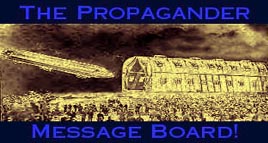

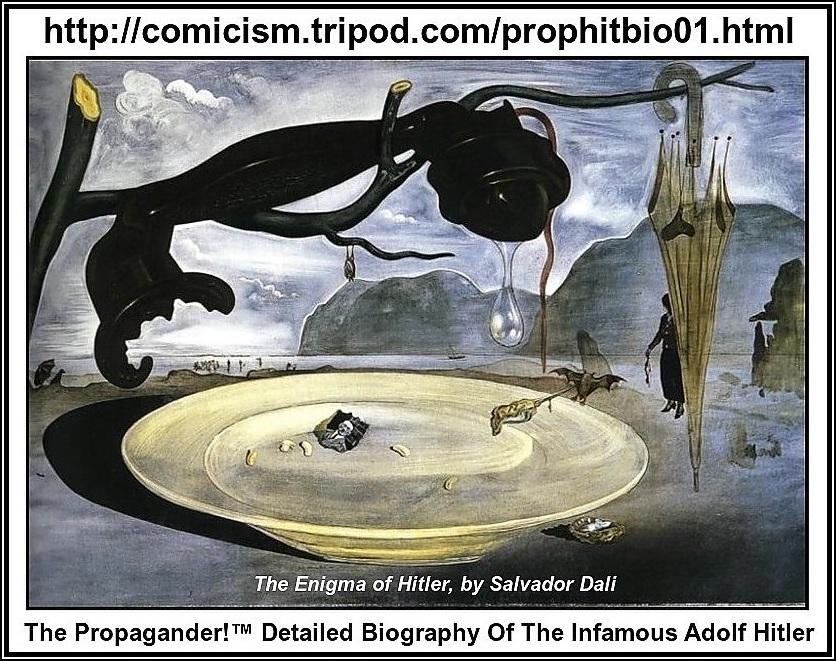
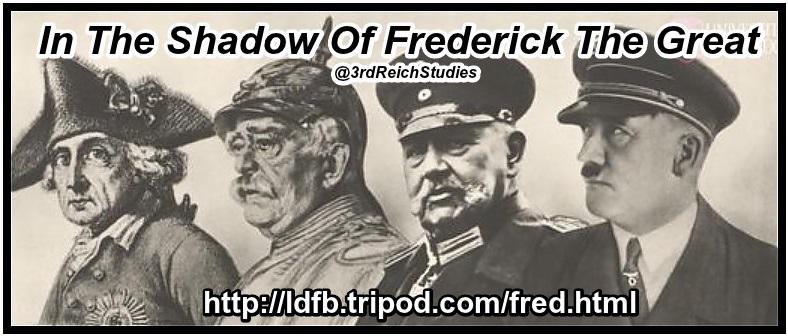

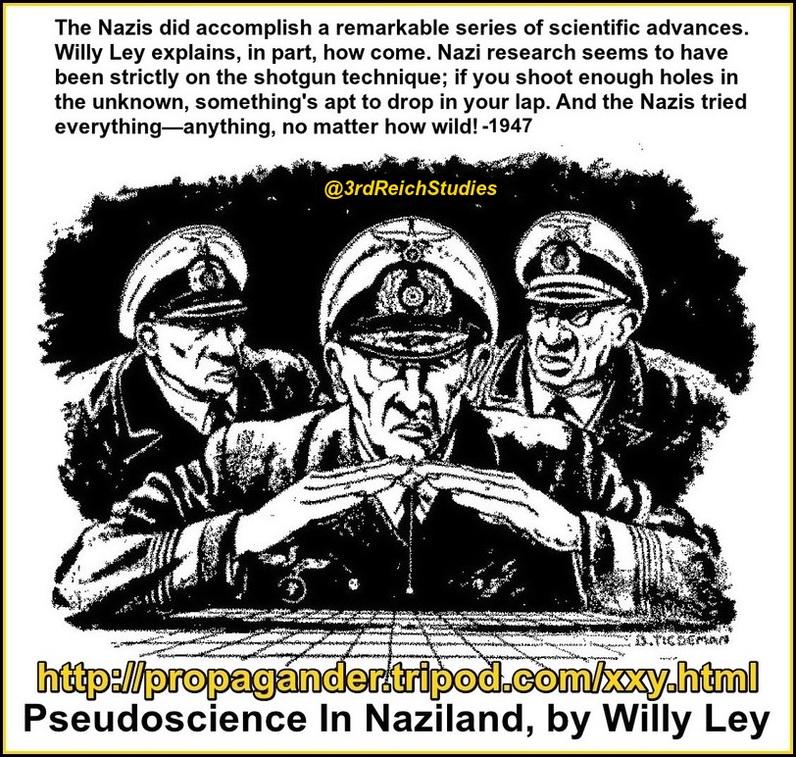
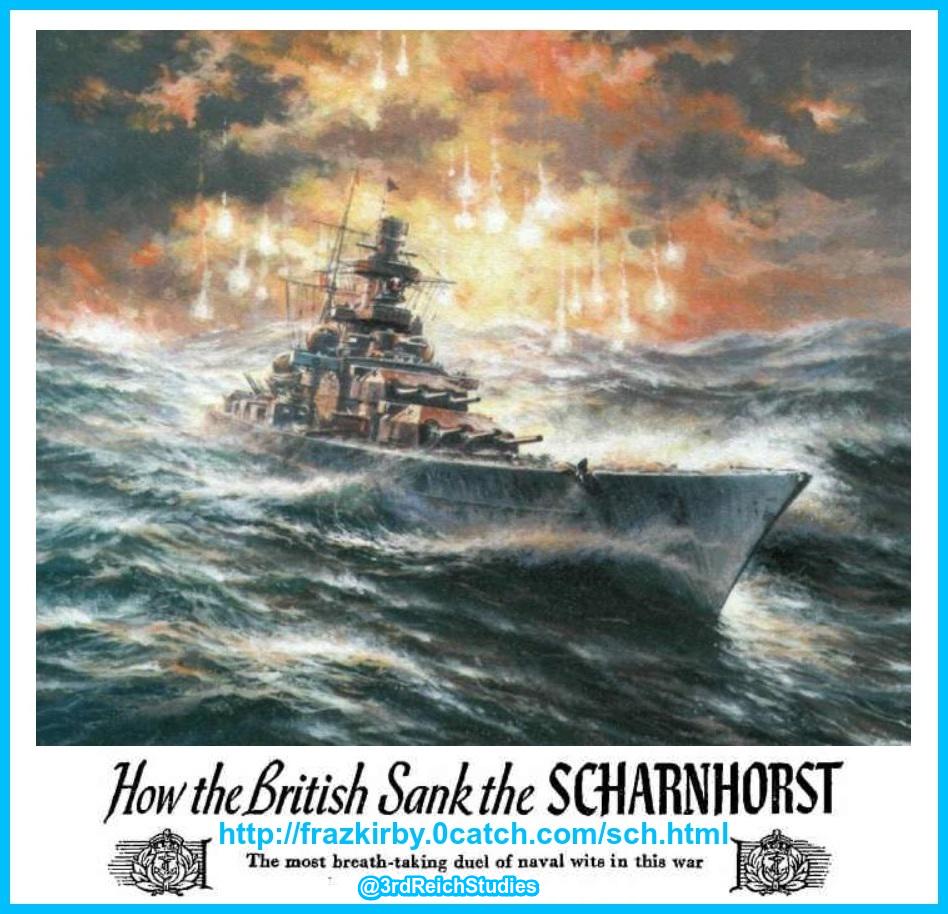


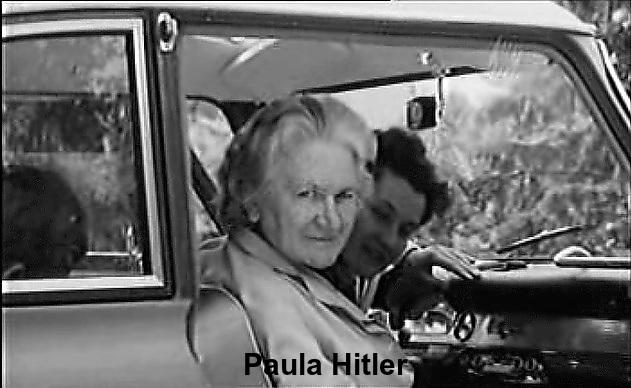



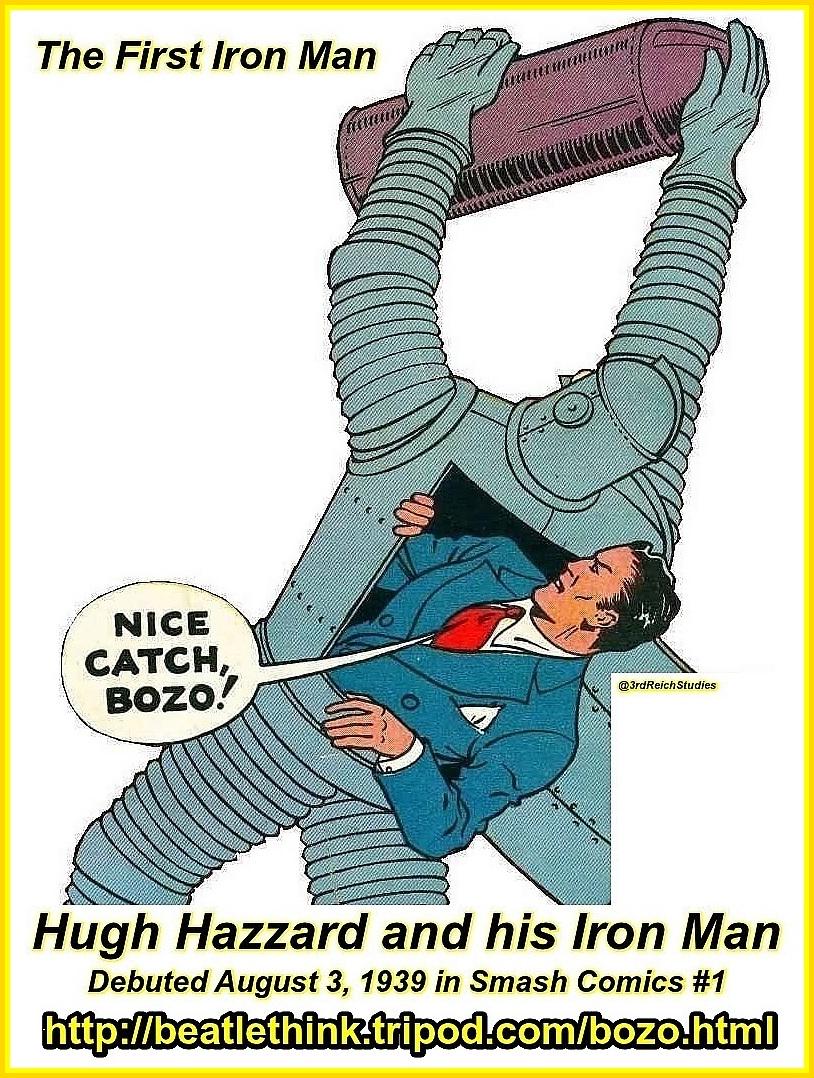
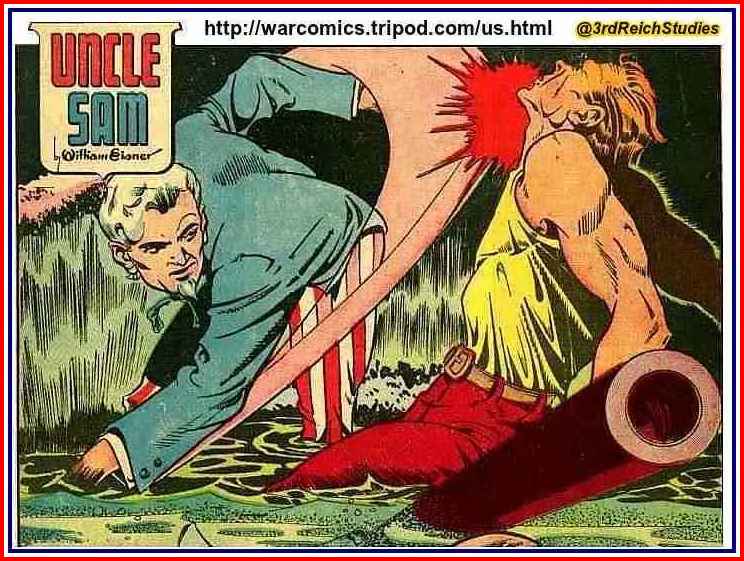
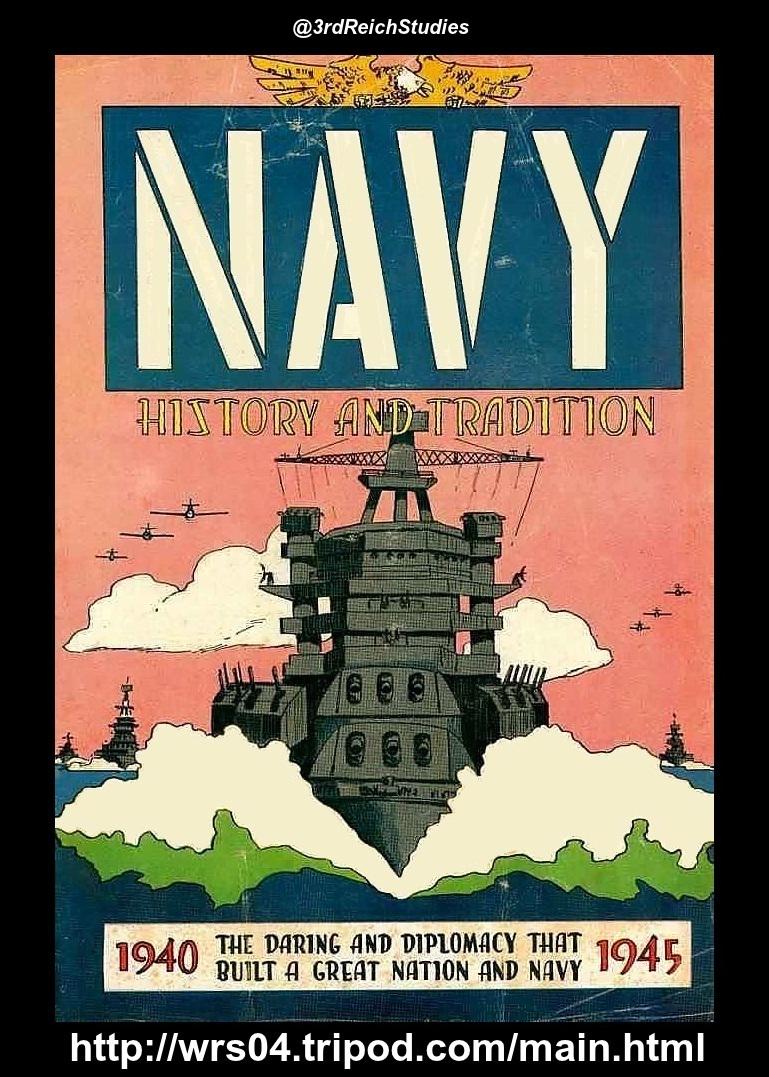
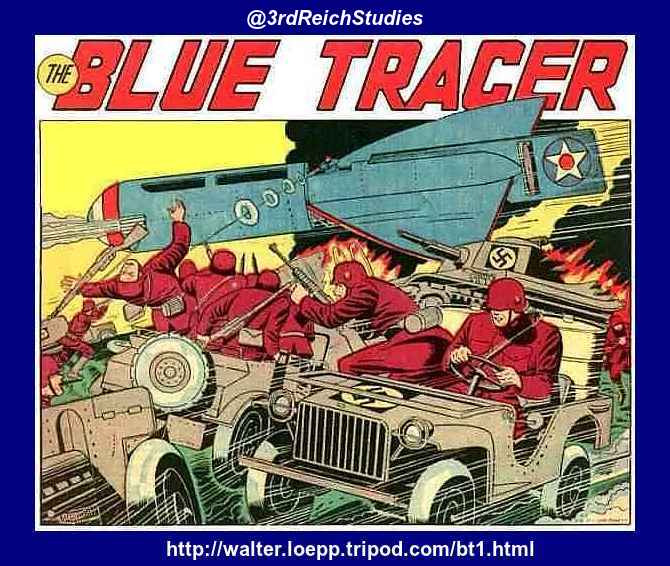

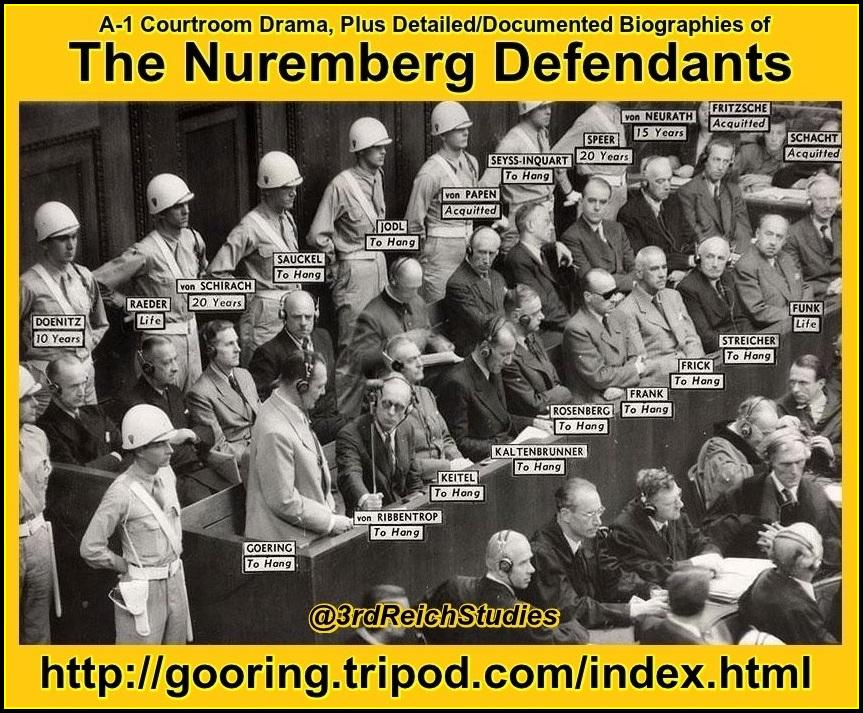
Disclaimer: The Propagander!™ includes diverse and controversial materials--such as excerpts from the writings of racists and anti-Semites--so that its readers can learn the nature and extent of hate and anti-Semitic discourse. It is our sincere belief that only the informed citizen can prevail over the ignorance of Racialist "thought." Far from approving these writings, The Propagander!™ condemns racism in all of its forms and manifestations.
Fair Use Notice: The Propagander!™may contain copyrighted material the use of which has not always been specifically authorized by the copyright owner. We are making such material available in our efforts to advance understanding of historical, political, human rights, economic, democracy, scientific, environmental, and social justice issues, etc. We believe this constitutes a "fair use" of any such copyrighted material as provided for in section 107 of the US Copyright Law. In accordance with Title 17 U.S.C. Section 107, the material on this site is distributed without profit to those who have expressed a prior interest in receiving the included information for research and educational purposes. If you wish to use copyrighted material from this site for purposes of your own that go beyond 'fair use', you must obtain permission from the copyright owner.

